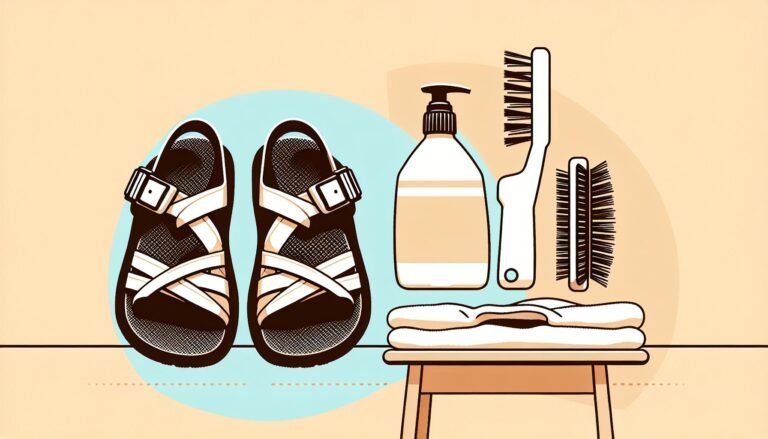What to Wear If You Don’t Have Hiking Shoes: Best Alternatives and Tips
Ready to hit the trails but don’t have hiking shoes? No need to worry. Whether it’s a spontaneous adventure or a beginner’s first hike, there are plenty of alternatives to keep your feet comfortable and protected.
From sturdy sneakers to versatile trail runners, the right choice can make all the difference in your hiking experience. This guide will help you navigate your options and ensure you’re well-prepared for your outdoor journey.
Understanding the Importance of Proper Footwear for Hiking
Proper footwear ensures safety, comfort, and performance on the trails. Hiking often involves uneven terrain with rocks, roots, and steep inclines that regular shoes might not handle effectively. Shoes designed for hiking offer features like sturdy soles, ankle support, and waterproof materials to tackle these conditions.
Trail injuries frequently involve twisted ankles, blisters, and sore feet, often stemming from inadequate footwear. Sturdy hiking shoes reduce those risks with reinforced design elements. For instance, soles with deep lugs improve traction, preventing slips on wet or loose surfaces. Ankle support minimizes the chances of twists and sprains on uneven ground.
Material choice also plays a critical role. Hiking shoes use breathable yet waterproof materials to keep feet dry in wet conditions. Wet feet can lead to blisters and infections, affecting hike quality and safety. Gore-Tex and similar materials balance breathability and water resistance to maintain foot health.
Footwear fit impacts trek efficiency. Shoes that fit poorly cause discomfort and fatigue, reducing the ability to cope with long hikes. Properly fitted hiking shoes distribute weight evenly, reducing unnecessary strain on muscles and joints.
Adhering to terrain-specific footwear matters as well. For instance, lightweight trail runners might suffice on well-maintained paths but fall short on rugged mountain trails. Conversely, heavy hiking boots excel in rough terrains, offering ample support and durability.
Investing in the right footwear prioritizes safety and enhances the outdoor experience, allowing hikers to focus on the trail rather than foot discomfort. Understanding these principles helps in making informed decisions when selecting alternatives to traditional hiking shoes.
Alternatives to Hiking Shoes

Trail Running Shoes
Trail running shoes offer a viable alternative to hiking shoes for those without them. These shoes are lightweight, flexible, and designed for uneven terrain. They usually have aggressive tread patterns that provide excellent traction on varied surfaces, including dirt, rocks, and mud. Many models also come with significant cushioning to absorb impact, reducing strain on the feet and joints during long hikes. Brands like Salomon and Brooks produce durable options suitable for both short and long-distance hikes.
Approach Shoes
Approach shoes are another excellent substitute. These shoes combine features of hiking and climbing footwear, making them ideal for technical trails. Approach shoes often have sticky rubber soles that offer superior grip on rocky surfaces, ensuring stability on steep terrain. They are constructed with sturdy materials that provide good protection and support for the feet. La Sportiva and Scarpa are well-regarded brands that offer high-quality approach shoes perfect for hiking.
Sturdy Athletic Shoes
Sturdy athletic shoes can be a practical choice for light hiking. While not designed specifically for rugged trails, they offer versatility and comfort. These shoes usually have a cushioned midsole that provides support and shock absorption, which can benefit hikers on well-maintained paths. New Balance and Asics are known for their reliable and comfortable athletic shoes, making them suitable for shorter or less challenging hikes.
By choosing one of these alternatives, hikers can ensure they have suitable footwear for their adventures even without traditional hiking shoes.
Key Features to Look for in a Shoe When Hiking

Grip and Traction
Grip and traction are paramount for hiking shoes. Shoes must provide adequate grip to navigate diverse terrains such as rocky paths and muddy trails. Tread patterns with deep lugs (examples: 5-7 mm depth) ensure enhanced stability and reduce the likelihood of slipping. Rubber compounds, such as Vibram, offer superior grip even on wet surfaces.
Comfort and Fit
Comfort and fit directly impact a hiker’s experience. Shoes require a snug fit without being too tight. Ample cushioning in the midsole reduces foot fatigue over long distances. Features like padded collars and moisture-wicking linings improve overall comfort. Half sizes and various widths aid in finding the perfect fit, essential for preventing blisters and discomfort.
Durability and Material
Durability and material dictate the longevity of hiking footwear. High-quality materials such as leather and synthetic fabrics like Gore-Tex resist wear and offer weather protection. Reinforced toe caps and heel guards add an extra layer of protection. Stitched and glued seams withstand rigorous use better than standard construction methods, ensuring shoes last longer even under tough conditions.
Preparing for Different Terrain Without Hiking Shoes

Hiking on Flat and Dry Trails
Flat, dry trails are less demanding on footwear. Sneakers can work well for these conditions if they have decent grip and support. Athletes often prefer running shoes for their cushion and flexibility. For casual hikers, walking shoes with good arch support are advisable. Brands like Nike, Adidas, and New Balance offer suitable options. Ensure the shoe fits snugly to avoid blisters. Check the sole pattern to ensure it provides adequate traction, even on loose dirt.
Navigating Rocky or Slippery Paths
Rocky and slippery paths require more specialized footwear. Trail running shoes with aggressive tread patterns are ideal. Look for options with reinforced toe boxes and sidewalls to protect feet from rocks. Approach shoes from companies like La Sportiva and Scarpa offer sticky rubber soles for excellent grip on wet and uneven surfaces. Opt for footwear with waterproof or water-resistant materials to keep your feet dry. Ensure the shoes provide ankle support to prevent sprains on unstable ground.
Additional Gear and Tips to Enhance Safety and Comfort

Using Hiking Socks
Choosing appropriate hiking socks increases comfort and prevents blisters. Merino wool or synthetic blends wick moisture, keeping feet dry. Sock height should match the type of terrain and shoes, with higher socks offering better protection against debris. Seamless designs reduce friction, minimizing the risk of hotspots. Layering with liner socks can provide extra blister protection.
Importance of Shoe Insoles
High-quality insoles support and cushion feet, reducing fatigue on long hikes. Gel or foam insoles can enhance shock absorption, while custom orthotics may correct any imbalances. Arch support is crucial for distributing pressure evenly across the foot, which aids in preventing injuries. Replace insoles regularly to maintain optimal support and comfort.

Finding the right footwear for hiking doesn’t always mean you need specialized hiking shoes. Alternatives like trail running shoes, approach shoes, and sturdy athletic shoes can provide the necessary grip, traction, and comfort for various terrains. It’s essential to consider the fit, durability, and materials of the shoes to ensure foot health and safety on the trails. Pairing your chosen footwear with appropriate hiking socks and high-quality insoles can further enhance comfort and prevent blisters. By making informed choices, you can enjoy your hiking adventures with confidence and ease.
Frequently Asked Questions
Why are proper hiking shoes important?
Proper hiking shoes are crucial for safety and comfort on trails. They provide support, prevent injuries, and enhance overall hiking experience through sturdy soles and waterproof materials.
What features should I look for in hiking shoes?
Key features include grip, traction, comfort, fit, durability, and materials like leather and Gore-Tex. These elements ensure safety and long-lasting performance on various terrains.
Are there alternatives to traditional hiking shoes?
Yes, alternatives include trail running shoes, approach shoes, and sturdy athletic shoes. These options cater to different terrains and hiking distances, offering flexibility and comfort.
How does the material of hiking shoes impact foot health?
Materials like leather and Gore-Tex help in durability and waterproofing, which are essential for foot health. They prevent blisters, keep feet dry, and provide necessary support.
Can I use trail running shoes for hiking?
Yes, trail running shoes are suitable for hiking, especially for shorter distances and less rugged terrains. They offer good grip and comfort.
How do I select the right hiking shoes for different terrains?
Consider the terrain’s roughness and type. For rocky terrains, choose shoes with strong grip and ankle support. For muddy or wet terrains, waterproof shoes are ideal.
Why are high-quality insoles important for hiking?
High-quality insoles offer enhanced foot support and cushioning, crucial for long hikes. They help in reducing foot fatigue, preventing pain, and maintaining comfort.






